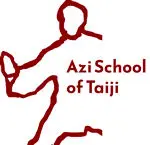Martial Applications

Every move in the form (tao lu) has as it's basis. As you learn, you will be introduced to the martial applications of each movement.
Tui Shou
Pushing hands, or Tui Shou, is a two-person training routine that can involve one or both hands. It enables you to learn the application of taiji principles and how to counteract the same applications.
Tui Shou uses very fluid movements, requiring each person to sense the other in order to get the upper hand. This can be done with the feet stationary or in movement. With training you aim to develop your reflexes, sensitivity, timing, coordination and positioning. All of which contribute to your leverage in applications.
Stability of your stance and the ability to yield to your opponent are both essential to developing a calm and relaxed posture. As you gain your foundation, you will be introduced to the principles of the eight gates (八門).
The Eight Gates (八門)
- P'eng (掤) often translated as "Ward Off" is an energetic quality that should be present in every taiji movement providing alertness, sufficient 'strength' to maintain structure when pressed, but with the absence of muscular tension in the body.
- Lü (捋) A sideways, circular yielding movement, often translated as "Roll Back."
- Chi (挤) often known as "Press" is a pressing or squeezing offset in a direction away from the body, usually done with the back of the hand or outside edge of the forearm.
- An (按) often known as "Push" a push down with the palm, which can appear as a strike if done quickly.
- Tsai (採) often known as "Pluck" or "Grasp", to pluck or pick downwards with the hand, especially with the fingertips or palm.
- Lieh (挒) translated as "Split", means to separate, to twist or to offset with a spiral motion, often while making immobile another part of the body (such as a hand or leg).
- Chou (肘) - an Elbow Strike
- K'ao (靠) - a Shoulder Strike
Combat Sequences
With a foundation in tui shou, we apply these in combat sequences as a training exercise for martial arts tai ji. Mastering basic sequences takes time, a cooperative training partner, and a lot of practice and patience. Once the sequence is learnt and becomes (almost) natural, it can be speeded up and added to.
Zhao Bao Taijiquan is known being one of the best close combat styles of taiji.
